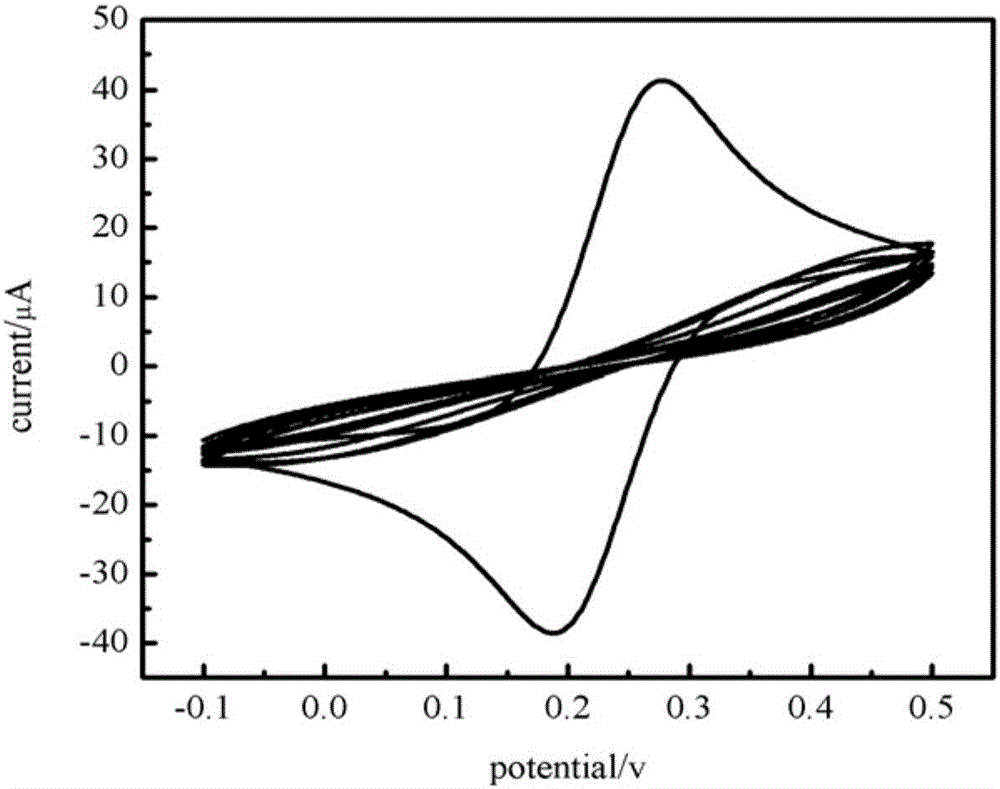Biosensor for synchronously detecting amyloid polypeptide monomers and aggregate and construction method and application thereof
An amyloid polypeptide and biosensor technology, applied in biological tests, instruments, measuring devices, etc., can solve problems such as high minimum concentration, and achieve the effects of low detection limit, improved sensitivity and strong specificity
- Summary
- Abstract
- Description
- Claims
- Application Information
AI Technical Summary
Problems solved by technology
Method used
Image
Examples
Embodiment 1
[0032] 1. The method for the biosensor constructed on the electrode, the steps are as follows:
[0033] At room temperature, modify 10 μM cDNA on the electrode for 16h, then wash with secondary water to remove the residual cDNA that is not modified, then place the electrode in MCH, the purpose of adding MCH is to seal the unreacted site on the electrode And make the modified cDNA in an upright structure, after being blocked in MCH for 1 hour, rinse with alcohol first, and then rinse with secondary water; then modify 10 μM DNA1 on the electrode, place it at room temperature for 2 hours, and then rinse with secondary water to remove Unreacted DNA1; then modify 10 μM DNA2-MB on the electrode, because methylene blue is easy to decompose when exposed to light, so from this step, all operations are carried out under dark conditions. After modification for 2 hours, use secondary water Rinse; then modify 10 μM DNA3-biotin on the electrode for 2h, and also wash with secondary water; th...
PUM
 Login to View More
Login to View More Abstract
Description
Claims
Application Information
 Login to View More
Login to View More - R&D
- Intellectual Property
- Life Sciences
- Materials
- Tech Scout
- Unparalleled Data Quality
- Higher Quality Content
- 60% Fewer Hallucinations
Browse by: Latest US Patents, China's latest patents, Technical Efficacy Thesaurus, Application Domain, Technology Topic, Popular Technical Reports.
© 2025 PatSnap. All rights reserved.Legal|Privacy policy|Modern Slavery Act Transparency Statement|Sitemap|About US| Contact US: help@patsnap.com



